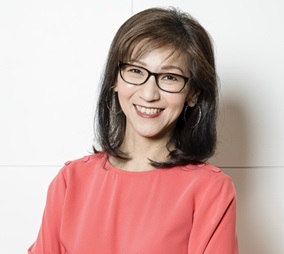“Architects of people and culture”: Inside Shiseido’s award-winning HR strategy
- Josephine Tan

Shiseido and United Women Singapore leaders, mentors, mentees and employees coming together to mark the launch of a year-long mentorship programme.
In today’s competitive talent market, organisations are under increasing pressure to deliver more than just perks and paychecks. The next generation of employees is seeking meaningful work, inclusive cultures, and opportunities for growth. Shiseido Asia Pacific is responding to this call with a people-first approach that is transforming the way it attracts, engages, and retains talent.
Having recently achieved its second consecutive Great Place to Work certification in Asia Pacific, Singapore, and Indonesia, Shiseido is not just celebrating recognition—it is walking the talk of what it means to be a purpose-driven and inclusive employer.

Speaking with HRM Asia, Roselin Lee, Vice President, Human Resources, Shiseido Asia Pacific, said, “Being certified as a Great Place to Work for two consecutive years is a significant achievement for us as an organisation. With 90% of our Shiseido Asia Pacific employees affirming that our organisation is a great place to work, this recognition reinforces our commitment to fostering a supportive, inclusive, and inspiring environment.”
The numbers reflect this commitment. In a recent Employee Engagement Survey, Shiseido Asia Pacific achieved a 97% participation rate and a 71% engagement score—a five-point increase from the previous cycle and two points above the Shiseido Group average. The region now ranks as the fourth highest engaged globally. More tellingly, employees reported a strong sense of personal accomplishment and demonstrated a willingness to go above and beyond their responsibilities, with motivation levels rising by nine percentage points.
For Lee, these results are not just metrics—they represent the success of a clear HR vision: to establish Shiseido Asia Pacific as the Home and Source for Talent. This vision includes developing future-ready leaders in an environment rooted in innovation, diversity, and trust.
A key part of this vision is creating a culture where everyone feels a sense of belonging. The Singapore regional office hosts a multicultural team comprising 16 nationalities, with over 60% of the workforce comprising millennials and Gen Z. This dynamic mix fosters a vibrant exchange of ideas and perspectives, driving creativity and innovation throughout the business.
“What distinguishes us is our approach to learning and development,” Lee explained. “Traditionally, Japanese firms focus on on-the-job training through job rotations. At Shiseido, we launched the Asia Learning Centre (ALC) in 2019 to drive leadership and soft skill development through trainings, ensuring our people are equipped with the capabilities to complement their job rotations and stretch assignments. Our goal is to enable individuals to become well-rounded and leaders with a growth mindset.”
Beyond structured learning, Lee believes in adapting HR policies to meet the needs of a diverse workforce. “Personally, I believe in the philosophy of ‘people over process.’ While policies are important as references, they must be flexible enough to engage different demographics. A one-size-fits-all approach is not effective.”
Shiseido’s inclusive culture is also reflected in its leadership. The Asia Pacific regional headquarters is led by a team that is 70% female, while the Singapore leadership team is 100% women-led. According to Lee, this was no accident.
“Shiseido Asia Pacific’s female-led leadership is a deliberate and strategic choice—reflecting our commitment to building an inclusive and forward-thinking workplace,” she said. Today, 50% of country heads in the region are both local and female, and 49% of leaders at the management level and above are women.
Lee herself broke new ground in 2016 as the first non-Japanese woman to join the executive team. When the time came to appoint a new regional CEO, she proposed a bold idea.
“I boldly proposed to [our then Group CEO, Masahiko Uotani] for us to have the first female regional CEO in our region, a role that had not existed in the organisation at that time,” Lee recalled. “To my surprise, I was met with wholehearted support, with Uotani sharing that he has always advocated for more women in leadership positions and agreeing that this would be the perfect opportunity for us to demonstrate our commitment to gender equality.” On 1 October 2020, Nicole Tan became Shiseido’s first female regional CEO in the organisation’s 153-year history.
Smart tech, human touch
Embracing its legacy of innovation, Shiseido is also leveraging technology to enhance its human-centric approach. Last June, the organisation launched HANA, an AI-powered smart recruitment assistant, to streamline the hiring process and ensure a strong cultural fit from the very first interaction.
“We launched HANA to ensure only the best candidates make the cut,” said Lee. The system pre-screens applicants, evaluates cultural alignment through personality assessments, and automates manually intensive tasks, such as interview scheduling.
The impact has been immediate and significant. Within nine months, time-to-hire dropped from 49 to 42 days, and recruiters saved over 1,570 hours across 554 interviews. Candidate satisfaction has been exceptionally high, Lee added, with 97.5% of those who interacted with HANA reporting a positive experience and 98% expressing overall satisfaction with the recruitment process.
The technology has freed up time for recruiters to do what matters most: connecting with candidates on a human level. “Our talent acquisition team can redirect their efforts to foster a stronger rapport to understand each candidate’s career goals, and make sure they feel recognised and valued every step of the way,” said Lee.
To further future-proof the employee experience, Shiseido launched Career Pathways in August last year. This initiative offers structured development plans to help employees align their aspirations with the organisation’s strategic goals. Alongside the ALC, which delivers leadership, functional, and innovation-focused training, Career Pathways supports employees in navigating their careers with clarity and purpose. Other programs, such as the Inspirational Leadership Programme (ILP) and Accelerated Leadership Programme (ALP), also help employees develop the confidence, capability, and creativity necessary to lead themselves and others through change.
A culture built on trust and purpose
At the heart of Shiseido’s people philosophy are its Trust 8 principles—behaviours that shape a culture of empathy, collaboration, and courage. These are not just theoretical ideals. The organisation celebrates them in action through its Circle of Trust 8 Awards, a peer-nominated platform that recognises employees who exemplify these values.
Beyond the workplace, Shiseido is also deeply committed to community impact through initiatives such as Shiseido Camellia Day, a region-wide volunteer programme, and mentorship partnerships with organisations like United Women Singapore.
READ MORE: Inside UNIQLO Singapore’s plan to win the retail talent war
“In today’s rapidly evolving business landscape, the role of HR has transcended traditional boundaries. It is no longer solely about managing personnel and administrative tasks; it is about shaping the very essence of our organisational culture and driving strategic growth,” said Lee. “As HR leaders, we have the unique opportunity to become architects of people and culture, crafting an environment where employees are enabled to excel, innovation flourishes, and the organisation achieves its fullest potential.”
Her advice for other HR professionals? Clearly articulate your organisation’s vision, embed it into the employee experience, and foster a culture that welcomes experimentation, diversity, and wellness.
“We should create opportunities for collaboration and innovation by encouraging cross-functional team interactions, idea-sharing platforms, and fostering a culture where experimentation is welcomed,” she concluded. “We must develop and implement policies that promote diversity and inclusion, offer ongoing learning opportunities that encourage personal and professional growth, and implement wellness programmes that address physical, mental, and emotional health.”






